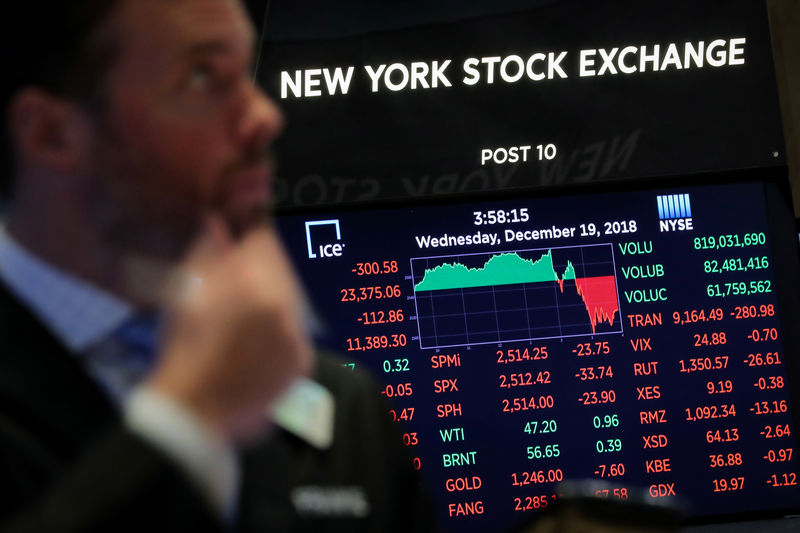By Lewis Krauskopf
NEW YORK (Reuters) - Did Jerome Powell just poke the bear?
U.S. stocks took another body blow on Wednesday after the Federal Reserve raised interest rates again and the central bank chairman did not soften his tone about the outlook for further financial tightening to the degree investors had hoped.
Now the question is whether Powell's message that the U.S. economy should be strong enough to stand on its own without further assistance from the Fed will be the catalyst that tumbles stocks to bear market levels.
"It takes away the idea that the Fed is a friend at this point," said Bucky Hellwig, senior vice president at BB&T (NYSE:BBT) Wealth Management in Birmingham, Alabama.
"It has the potential (to push us into a bear market) especially if Powell and the other members of the FOMC continue to sound hawkish between now and the next meeting."
When the dust cleared on Wednesday, the S&P 500 (SPX) was down 1.54 percent on the day, which put it 14.5 percent below its Sept. 20 record high. That moves the benchmark index ever closer to the 20 percent decline many market observers consider to be a bear market.
The Nasdaq (IXIC) was even closer to growling. The index known for its high profile tech names ended down 18.2 percent from its Aug. 29 high, with a 2.17 percent selloff on the day.
In fact, well over half of S&P 500 companies are now down by at least 20 percent from their 52-week highs, while some segments of the market including small-cap stocks have already confirmed a bear move.
In its decision on Wednesday, the Fed raised benchmark overnight lending rates by 0.25 percent to a range of 2.25 to 2.50 percent. It is keeping the core of its plan to tighten monetary policy intact even as central bank officials said they would likely slow the pace of further rate increases next year.
The market's selloff steepened during Powell's press conference as he said the central bank would continue drawing down the size of its balance sheet by $50 billion each month, even though it was a repetition of longstanding Fed policy.
"The balance sheet question did him in," said Fritz Folts, chief investment strategist at 3EDGE Asset Management in Boston. "Maybe they have already committed their policy error."
Powell jostled the stock market in recent months with his comments about the level of interest rates. Late last month, the Fed chair injected investors with a strong dose of optimism, saying that the central bank's policy rate was "just below" estimates of a level that neither brakes nor boosts a healthy U.S. economy.
"It was going to be really hard for him to not spook the market after it overreacted last time he talked," said Megan Greene, global chief economist with Manulife Asset Management in Boston. "Rate hike expectations had fallen to one for 2019 which wasn't realistic."
To be sure, there is no guarantee the S&P 500 will slide into bear market territory. For one, investors are quick to note that bear markets are linked to recessions and the economy looks relatively solid.
Also, the first reaction of investors to Powell and the Fed may not be their last.
“If you were to look historically, the market’s initial knee jerk reaction tends to be the wrong one,” said Jamie Cox, managing partner with Harris Financial Group in Richmond, Virginia.

But for now the Fed has added to jitters for a market already spooked by declining U.S. corporate profit growth and trade tensions between the two largest economies, the United States and China.